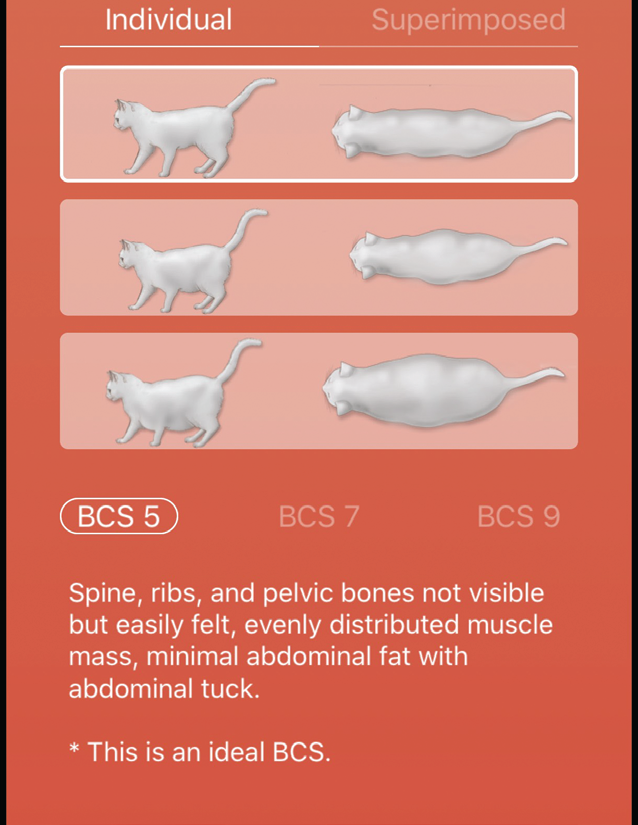Q. Our adopted shelter cat is now 6 years old and weighs 17 pounds. He is a tiger/tabby mix, and we are told, with a trace of Egyptian Mau. He is an indoor cat, so his exercise consists of running around the house, climbing, and playing with his toys. His health is good. His daily diet consists of 4 oz. of dry food and 3/4 of a can of wet food for a total of 300 calories a day. Our vet said he wants to see him at 15 pounds. Considering he’s a big cat, is this realistic?
A. Thank you for contacting us about this issue. We understand your concerns about your cat’s weight. Being overweight is a significant problem in cats, as between 40 and 50% of adult cats are overweight and approximately 30% of cats are obese (greater than 20% heavier than their optimal weight). Obesity is associated with a number of health problems in cats, including diabetes, osteoarthritis, certain types of cancer, and high blood pressure, so maintaining a heathy body weight is an important aspect of assuring optimal health in us kitties.
It’s important to note that just looking at a cat’s weight only tells us part of the story. As you have alluded to, it may be normal and healthy for some large cats to weigh an amount that would be too high for smaller cats. This highlights the importance of body condition.
The body condition score is a subjective measure of a cat’s condition that is judged by things like ability to feel ribs and to see a waist and the presence or absence of rounding of the abdomen (i.e. belly pooch). Different body condition scales are used, with the most common being a scale of 1 to 9, with 1 being emaciated and 9 being obese. Using this particular scale, the optimal body condition score is 5.
Both body condition score and weight can be used to determine the best dietary plan, and while the number of calories that you are currently feeding your cat does not seem high (most indoor cats need approximately 20 calories per pound of body weight), there is some variability among individual cats, depending upon their activity level and overall health. Another thing to consider is whether you are feeding treats, which can be quite calorie dense. Treats should make up no more than 10% of a cat’s total daily caloric intake.
I assume that your veterinarian may feel that your kitty’s body condition score is a bit high, prompting him/her to recommend some weight loss. If this is the case, this can be achieved by increasing activity (i.e., dedicated play time) and by dietary modification (using foods that are designed for weight loss or by designing a feeding schedule that avoids free-choice feeding and slightly decreases the amount of food offered over time). It’s important to note that weight loss in cats should occur VERY slowly, and your veterinarian is best equipped to advise you in this regard.
Best of luck, and please send an update when you can.
All my best,
Elizabeth




